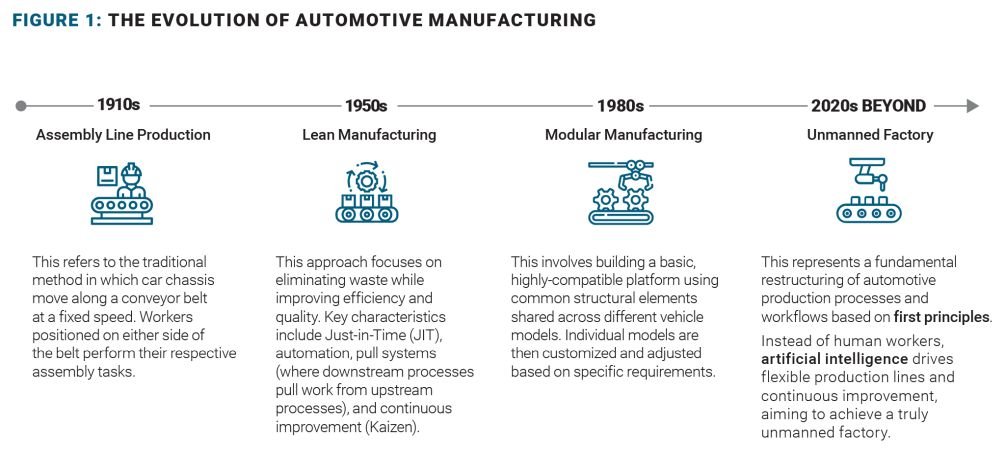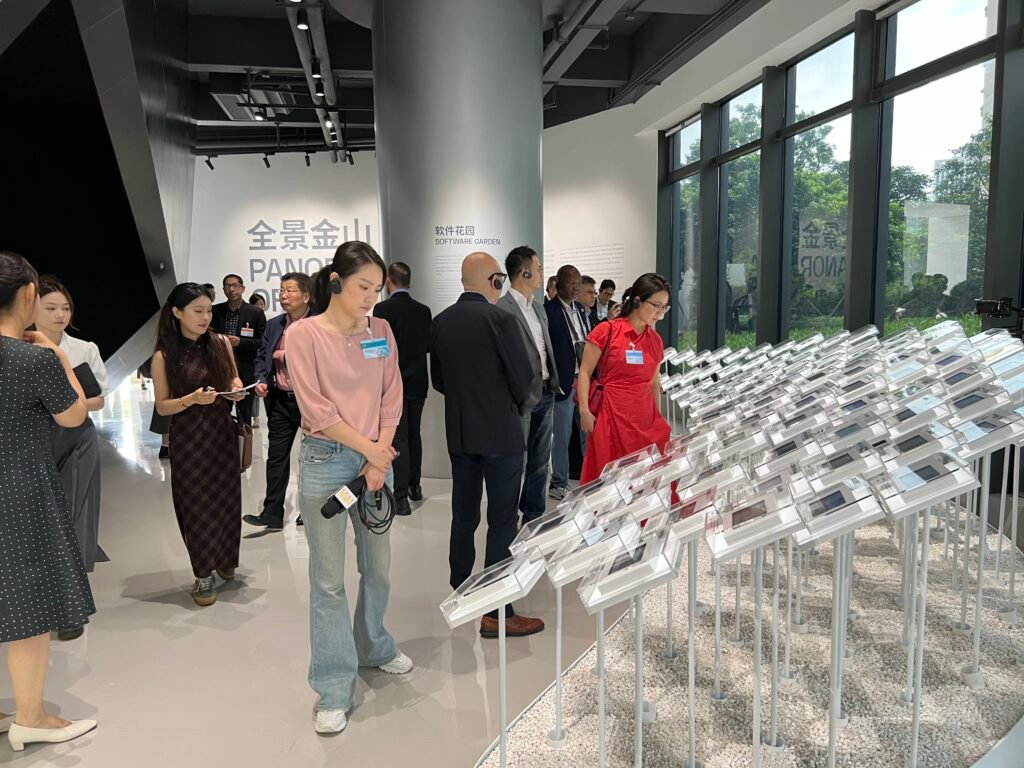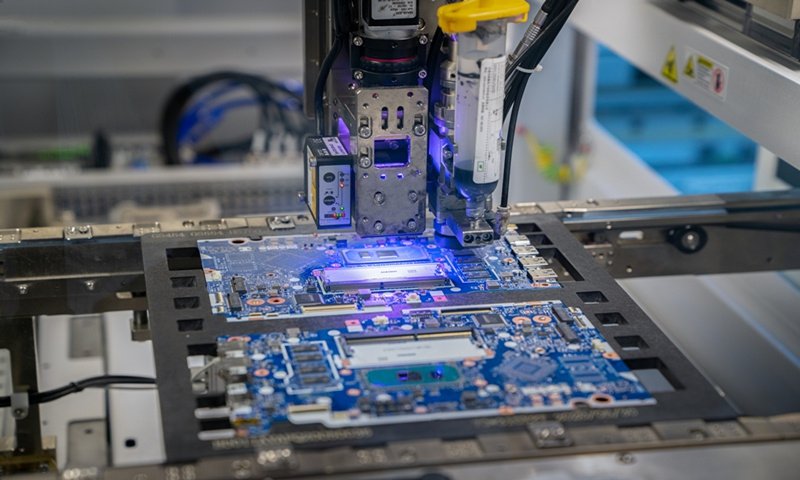
Illustration: Liu Rui/GT
In a move that highlights Shenzhen’s dual focus on sci-tech innovation and high-level opening-up, the city’s Commerce Bureau and Development and Reform Commission have jointly released the Implementation Plan for Promoting High-Quality Development of Service Trade and Digital Trade, according to an official post published Wednesday on the “Shenzhen Release” WeChat account. The plan sets an ambitious goal: by 2030, digitally deliverable services will make up more than 50 percent of Shenzhen’s total services trade volume.
As reported by the Securities Times, the plan also includes measures to enhance foreign exchange management for direct investment, and support foreign institutions in channeling capital into Shenzhen-based technology enterprises through the Qualified Foreign Limited Partner (QFLP) framework.
Shenzhen stands as both a hub of high-tech enterprises and a frontier of China’s deepening high-level opening-up. The city exemplifies how openness and innovation can create a virtuous cycle, where foreign capital accelerates technological development, and advanced tech sectors, in turn, attract further international investment. By broadening access for overseas investors to participate in the city’s tech ecosystem, Shenzhen is not only fostering innovation but also offering premium “tech assets” that diversify and elevate global investment portfolios.
From a broader perspective, amid mounting global economic uncertainty and intensifying technological competition, China’s transition toward high-quality development is accelerating the expansion of its high-tech sectors – often surpassing expectations. Backed by a vast domestic market, a comprehensive industrial ecosystem, and an increasingly proactive policy framework, China’s strategy of high-level opening-up is drawing growing foreign investment, particularly as the digital economy and modern services sector gather momentum.
According to data from the Ministry of Commerce, China attracted 96.29 billion yuan ($13.39 billion) in actual foreign investment into high-tech manufacturing in 2024, accounting for 11.7 percent of the national total. This reflects rising foreign interest in China’s innovation-driven industries. More importantly, investment is increasingly flowing into high-value-added, technology-intensive fields – underscoring a strong alignment with China’s long-term strategy for high-quality, innovation-led growth.
In addition, growing optimism over Chinese tech stocks among global investment institutions – sparked by the breakthrough of artificial intelligence (AI) company DeepSeek earlier this year – further underscores the rising appeal of China’s high-tech assets. DeepSeek’s advancements in open-source AI have not only showcased China’s innovation capacity but also reinforced investor confidence in the country’s broader tech ecosystem.
The synergy between high-level opening-up and tech asset development is particularly powerful. Opening-up facilitates the inflow of capital, talent, and cutting-edge technologies into China’s innovation ecosystem. Policy tools such as the QFLP program and joint research and development (R&D) hubs are enabling faster breakthroughs in sectors like biotechnology, AI, and digital infrastructure – further reinforcing a virtuous cycle of openness and innovation.
Shenzhen offers a vivid illustration of this dynamic. In recent years, the city has made notable strides in deepening openness and strengthening its high-tech industrial base. Digital trade and services trade have seen rapid growth, reinforcing Shenzhen’s role as a frontier for next-generation trade models.
This internationalization push is further supported by improvements in intellectual property protection. In 2024, Shenzhen granted more than 240,000 patents, ranking first in China for the seventh consecutive year.
As policy innovation and regulatory refinement continue, Shenzhen is increasingly becoming a magnet for global capital and a launchpad for the internationalization of China’s tech enterprises. It stands as a compelling case study of how high-level openness can drive high-quality, tech-powered development.
By further integrating high-level opening-up with the development of robust technology assets, China is not only elevating its position in the global economy but also unlocking new momentum for a transformative phase of high-quality, innovation-driven growth.
As this strategy progresses, China’s tech assets are gaining in global competitiveness. At the same time, Chinese tech companies are deepening international collaboration, helping to embed Chinese innovation more firmly into global value chains. As China continues to advance its technological capabilities, it will attract rising interest from global investors seeking to engage with its dynamic and evolving market.
The author is a reporter with the Global Times. bizopinion@globaltimes.com.cn








